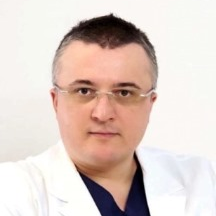Physiology of Telocytes
A special issue of Cells (ISSN 2073-4409).
Deadline for manuscript submissions: 15 October 2024 | Viewed by 190
Special Issue Editors
2. Division of Cellular and Molecular Biology & Histology, ‘Carol Davila’ University of Medicine and Pharmacy, 050474 Bucharest, Romania
Interests: dermatology; skin regeneration/repair; regenerative medicine; telocytes
2. "Victor Babes" National Institute of Pathology, 050096 Bucharest, Romania
Interests: prognostic markers; cancer biomarkers; cancer biology; cancer metastasis; metastasis
Special Issues, Collections and Topics in MDPI journals
Special Issue Information
Dear Colleagues,
Some will say that the best things happen unexpectedly …
The scientific quest of Telocytes started in Bucharest, in early 2005, as a delightful research-based endeavor into describing the microscopic environment of pancreas interstitum, at that time focusing on the Cajal’s so-called “interstitial neurons'' (Interstitial Cells of Cajal, ICC). However, in pancreatic stroma, among the well-acknowledged ICC, we extensively described cells with morphological similarities, but distinctive, suggesting for that moment the name of Interstitial Cajal-like cells (ICLC). Moreover, at that time, our extended research evidenced the pervasive existence of the so-called ICLC into interstitia of many other organs (cavitary or non-cavitary) strongly suggesting their ubiquity. Shortly, all that research was internationally confirmed, and additional complementary data was published in support of the existence of this cell population within already acknowledged organs. Considering that sometimes evidence is stronger than just indicating a few coincidences, by summarizing the ultrastructural details of both cell types one conclusion resided: there is a reasonable difference between ICC and ICLC and this is driving an imperious necessity of delimiting these cell populations. Moreover, this was carried out by terming ICLC as Telocytes (lat. Tλoσ (Telos)— individual’s greatest potential).
Presently, Telocytes represent a distinct interstitial cell population, extensively documented in terms of morphology and microscopical evidence, whose described interstitial distribution spectrum has been significantly expanded in recent years. To date, there is a great body of data referring to the existence of Telocytes within different organ interstitia of various animal species (mammals, amphibians, reptiles, etc.), reported at distinct stages of evolution. These findings are somehow indicating the evolutionary involvement of Telocytes into the definition of tissular architecture and tissular homeostatic processes of different species, including humans. Additionally, to all this valuable microscopy data other strong genetical, biochemical, proteomic and immunohistochemical evidence were published, favoring few hypotheses related to Telocytes roles either in normal tissue, or in various pathologies. The involvement of interstitium into specific pathologies was previously studied and the targeted (ultra)structural changes of Telocytes could still indicate apparent features of this distinct interstitial cell population. However, a few crucial questions are still standing, like: What is their distinctive cell marker(s)? Which are those exact role(s) of Telocytes? How can Telocytes be leveraged for scientific and medical purposes?
We presume that the first natural and logical steps into elucidating the roles of Telocytes were (at least partially) accomplished. In this context we are considering, organizing, and proposing you this Special Issue on Physiology of Telocytes as a step forward in clarifying and attesting the roles of Telocytes, and bring evidence of their distinct physiology in relation with their peculiar microscopic morphology. Here, we are encouraging publishing new data on Telocytes that could help in elucidating their functionality into the living interstitium, or could help clarify their definitive roles either in lesion progression, or in tissue homeostasis.
However, this is just the beginning of a thrilling scientific journey of which destination could offer (at least a few) new medical approaches, or, in the finals, could participate in changes of some medical paradigms.
We are looking forward to receiving your manuscripts.
Dr. Catalin G. Manole
Prof. Dr. Mihail E. Hinescu
Guest Editors
Manuscript Submission Information
Manuscripts should be submitted online at www.mdpi.com by registering and logging in to this website. Once you are registered, click here to go to the submission form. Manuscripts can be submitted until the deadline. All submissions that pass pre-check are peer-reviewed. Accepted papers will be published continuously in the journal (as soon as accepted) and will be listed together on the special issue website. Research articles, review articles as well as short communications are invited. For planned papers, a title and short abstract (about 100 words) can be sent to the Editorial Office for announcement on this website.
Submitted manuscripts should not have been published previously, nor be under consideration for publication elsewhere (except conference proceedings papers). All manuscripts are thoroughly refereed through a single-blind peer-review process. A guide for authors and other relevant information for submission of manuscripts is available on the Instructions for Authors page. Cells is an international peer-reviewed open access semimonthly journal published by MDPI.
Please visit the Instructions for Authors page before submitting a manuscript. The Article Processing Charge (APC) for publication in this open access journal is 2700 CHF (Swiss Francs). Submitted papers should be well formatted and use good English. Authors may use MDPI's English editing service prior to publication or during author revisions.
Keywords
- telocytes
- telopodes
- physiology
- pathology
- tissue homeostasis
- regenerative medicine







